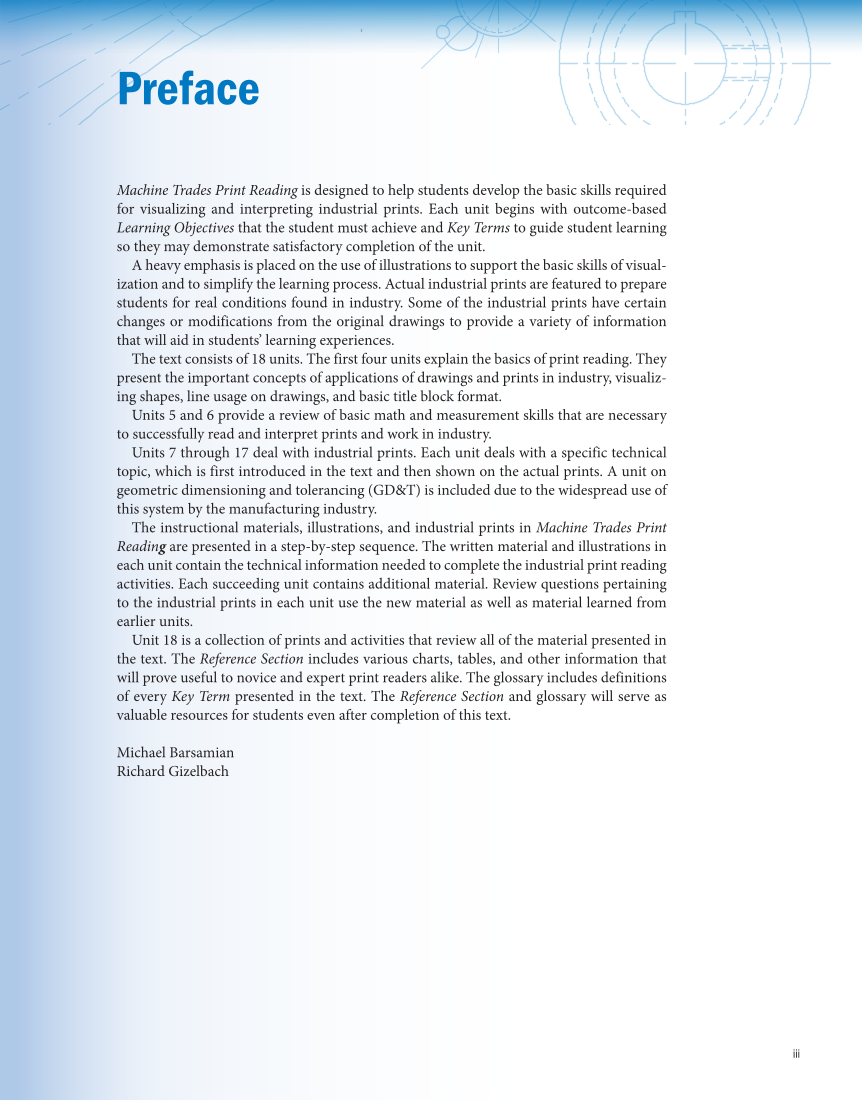iii Preface Machine Trades Print Reading is designed to help students develop the basic skills required for visualizing and interpreting industrial prints. Each unit begins with outcome-based Learning Objectives that the student must achieve and Key Terms to guide student learning so they may demonstrate satisfactory completion of the unit. A heavy emphasis is placed on the use of illustrations to support the basic skills of visual- ization and to simplify the learning process. Actual industrial prints are featured to prepare students for real conditions found in industry. Some of the industrial prints have certain changes or modifications from the original drawings to provide a variety of information that will aid in students’ learning experiences. The text consists of 18 units. The first four units explain the basics of print reading. They present the important concepts of applications of drawings and prints in industry, visualiz- ing shapes, line usage on drawings, and basic title block format. Units 5 and 6 provide a review of basic math and measurement skills that are necessary to successfully read and interpret prints and work in industry. Units 7 through 17 deal with industrial prints. Each unit deals with a specific technical topic, which is first introduced in the text and then shown on the actual prints. A unit on geometric dimensioning and tolerancing (GD&T) is included due to the widespread use of this system by the manufacturing industry. The instructional materials, illustrations, and industrial prints in Machine Trades Print Reading are presented in a step-by-step sequence. The written material and illustrations in each unit contain the technical information needed to complete the industrial print reading activities. Each succeeding unit contains additional material. Review questions pertaining to the industrial prints in each unit use the new material as well as material learned from earlier units. Unit 18 is a collection of prints and activities that review all of the material presented in the text. The Reference Section includes various charts, tables, and other information that will prove useful to novice and expert print readers alike. The glossary includes definitions of every Key Term presented in the text. The Reference Section and glossary will serve as valuable resources for students even after completion of this text. Michael Barsamian Richard Gizelbach
